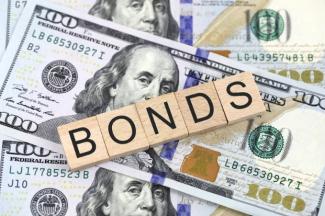
Why You Shouldn’t Abandon Bonds
Bond Prices May Not Matter as Much as You Might Think They Do
While swift bond price declines can be upsetting, it’s important to remain focused on the long-term benefits of higher interest rates. Bond total returns have two main components: price return and return from income.
Changes to interest rates cause these two components to move in opposite directions.
As a medium- to long-term investor, you should care more about bond total returns instead of the negative short-term impact on bond prices. In fact, as we show in the chart, the long-term performance of bond investments has come mostly from income return, not price return.
Price Return and Total Return for U.S. Aggregate Bonds
Why Bond Bear Markets are Fundamentally Different From Stock Bear Markets
For bond investors, the price return component’s effect on total return decreases as time extends. For stock investors, the price return component of total return is much more significant. “The Lost Decade” is a great example of this: From January 2000 through December 2009, the total annualized return for the S&P 500 was –0.95%, inclusive of the reinvestment of dividends. The negative price returns caused by the bear markets of 2000–2002 and 2007–2009 had an immense impact on long-term returns.
Now take the bond bear market of the 1970s, which was seen as a terrible time to have been invested in bonds as both inflation and interest rates were soaring. But consider this: Long-term bond investors who reinvested their income returns, and remained patient as compounding took hold, nearly doubled their capital from 1976–1983. Over the longer term, bond total returns are driven much more by reinvestment of interest income and compounding than by price returns. So try to look beyond the immediate pain of any losses appearing in your quarterly bond portfolio statements and instead focus on the longer-term upside of rising interest rates.
Interest Income And Reinvestment Make up the Largest Portion of Total Return in Bond Funds
Bond investing in the 1970s and early 1980s
Bond Math Holds up Even During Fixed Income Shocks
Consider short-term Treasuries: interest-rate-sensitive securities whose total returns are extremely sensitive to central bank policy changes. As interest rates on the short end of the Treasury curve have risen due to expectations of further Federal Reserve policy adjustments, so too has the weighted average yield to maturity for funds that invest in these securities. That provides a better foundation to help you weather further rate shocks as starting yields are now much higher. Even if rates were to rise an additional 200 basis points (bps) from here, you would now recoup any lost principal within a year and then benefit from higher yields moving forward—ultimately increasing the long-term value of your bond portfolios (see chart).
That means the time it takes to recoup your capital from an interest rate shock depends on your starting yield. A 200 bp rate shock from a 50 bp starting yield will take longer to break even when compared to a 200 bp rate shock from a 250 bp starting yield.
The bottom line—as rates move higher, bonds are more attractive, not less.
Source for this post: Vanguard
Past performance is no guarantee of future results. All investing is subject to risk, including possible loss of principal. Investments in bond funds are subject to the risk that an issuer will fail to make payments on time, and that bond prices will decline because of rising interest rates or negative perceptions of an issuer’s ability to make payments.

